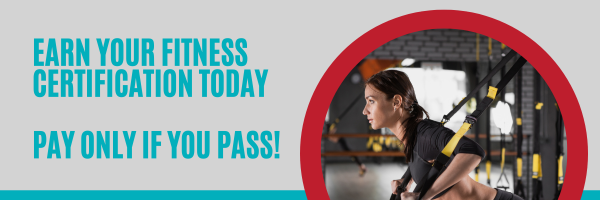Shoulder circles are a simple yet highly effective exercise that targets the muscles of the shoulders, arms, and upper back. To maintain stability and proper form while performing shoulder circles, it is important to stand with feet shoulder-width apart. By rotating your shoulders in a circular motion, both forward and backward, you can improve mobility, flexibility, and strength while promoting overall upper body health. This exercise is accessible to individuals of all fitness levels and can be easily incorporated into daily routines. In this article, we will explore the top 10 benefits of shoulder circles and why they should be a part of your fitness regimen.
1. Improving Shoulder Mobility
One of the primary benefits of shoulder circles is their ability to enhance shoulder mobility. Standing with feet shoulder-width apart helps maintain stability and proper alignment, which is crucial for enhancing shoulder mobility. The shoulder joint is one of the most mobile joints in the body, but it can become stiff over time, especially for those who sit for long periods or engage in repetitive arm movements.
-
How It Helps: The circular motion of shoulder circles gently stretches and loosens up the joints and muscles around the shoulders, promoting a greater range of motion.
-
Why It’s Important: Improved shoulder mobility can reduce stiffness and make daily activities, like reaching or lifting, easier and more comfortable. It also supports better overall joint health.
2. Reducing Shoulder Pain
Shoulder circles are a great tool for managing and alleviating shoulder pain, particularly in individuals who suffer from conditions like frozen shoulder, rotator cuff injuries, or general shoulder discomfort.
-
How It Helps: The gentle movement of the exercise encourages blood flow to the shoulder area, promoting healing and reducing inflammation.
-
Why It’s Important: Regular movement is essential for relieving stiffness and pain in injured or overworked shoulder muscles, making shoulder circles an ideal low-impact option for pain management.
Strengthening the Rotator Cuff Muscles
Although shoulder circles are often associated with mobility, they are also effective for building strength in the muscles surrounding the shoulders.
-
Targeted Muscles: Shoulder circles engage the deltoids, rotator cuff muscles, and upper back muscles in a dynamic way, working them through a full range of motion.
-
Why It’s Important: Strong shoulder muscles are crucial for performing daily tasks that involve lifting, pushing, or pulling. Additionally, strengthening these muscles helps protect the shoulder joint from injury during physical activity.
4. Toning the Arms
In addition to the shoulders, shoulder circles can also target and tone the muscles in your arms, particularly the biceps and triceps.
-
How It Helps: The repetitive motion of shoulder circles engages the upper arm muscles, helping to define and strengthen them over time.
-
Why It’s Important: Toning the arms not only improves the aesthetic appearance of your upper body but also enhances functional strength, making everyday movements easier.
5. Improving Posture
Good posture is essential for maintaining overall health and preventing injury, especially as many people spend prolonged hours hunched over desks or devices. Shoulder circles can help correct poor posture by strengthening the muscles of the upper back and shoulders.
-
How It Helps: The exercise promotes proper alignment of the shoulders and encourages the muscles to pull the shoulders back and down, counteracting slouching or forward shoulder positioning.
-
Why It’s Important: Improved posture reduces strain on the spine and neck, decreasing the likelihood of developing back and neck pain. Good posture also boosts confidence and helps you move more efficiently.
6. Enhancing Balance and Coordination
Shoulder circles may seem like a simple movement, but they require a certain level of balance and coordination, especially when performing them in a backward direction.
-
How It Helps: As you rotate your shoulders, your body works to maintain stability and coordination, which engages your core and other stabilizing muscles.
-
Why It’s Important: Improved balance and coordination not only benefit your workout routine but also enhance overall body control in everyday activities, reducing the risk of falls and injuries.
7. Boosting Energy
If you’re feeling sluggish or fatigued, shoulder circles can serve as a quick energy booster. This easy exercise stimulates blood flow and increases oxygen supply to the muscles, providing an invigorating effect.
-
How It Helps: The rhythmic movement of shoulder circles increases circulation, delivering oxygen and nutrients to the muscles and brain, which can leave you feeling more alert and refreshed.
-
Why It’s Important: Boosting energy levels naturally through movement helps combat fatigue and improves focus, making shoulder circles a great way to energize yourself during long workdays or low-energy moments.
8. Reducing Stress and Promoting Relaxation
Shoulder circles are not only good for the body, but they are also beneficial for mental well-being. The gentle, repetitive motion of the exercise can help release tension in the shoulders and upper back, which is a common area where stress accumulates.
-
How It Helps: Performing shoulder circles encourages relaxation of tight muscles and helps release stored tension, which can provide immediate stress relief.
-
Why It’s Important: Reducing stress is vital for mental health, and incorporating relaxation exercises like shoulder circles into your routine can contribute to overall emotional well-being.
9. Improving Athletic Performance
For athletes, shoulder circles can be an excellent way to improve upper body mobility, strength, and flexibility, which are essential for optimal performance in many sports.
-
How It Helps: By increasing the range of motion and strength in the shoulders, shoulder circles help athletes maintain better form and control during physical activities that rely on strong shoulders, such as swimming, tennis, or throwing sports.
-
Why It’s Important: Enhanced shoulder mobility and strength can lead to more efficient movements and reduce the risk of injury, allowing athletes to perform at their best.
10. Convenience and Accessibility
One of the most significant advantages of shoulder circles is their convenience. This exercise requires no equipment, minimal space, and can be performed almost anywhere, making it an ideal option for those with busy schedules or limited access to a gym.
-
How It Helps: Whether you’re at home, in the office, or outdoors, shoulder circles can be done in a matter of minutes, making them an accessible way to stay active.
-
Why It’s Important: Finding time to exercise can be challenging, but with shoulder circles, you can easily fit a quick, effective movement into your day, helping you maintain consistency in your fitness routine.
Conclusion
Incorporating shoulder circles into your fitness routine can provide a wide range of benefits, from improving mobility and reducing shoulder pain to enhancing posture and boosting energy levels. This simple yet effective exercise can strengthen your shoulder and arm muscles, improve your overall coordination, and even help reduce stress and tension in the upper body. Additionally, shoulder circles are highly accessible, requiring no equipment or special skills, making them an ideal exercise for people of all fitness levels.
Whether you're looking to improve your athletic performance, relieve muscle tightness, or just add a new movement to your daily routine, shoulder circles are a versatile exercise that can offer both physical and mental health benefits. With consistent practice and attention to proper form, you can enjoy the full range of advantages that shoulder circles provide—helping you build a stronger, healthier, and more mobile upper body.





